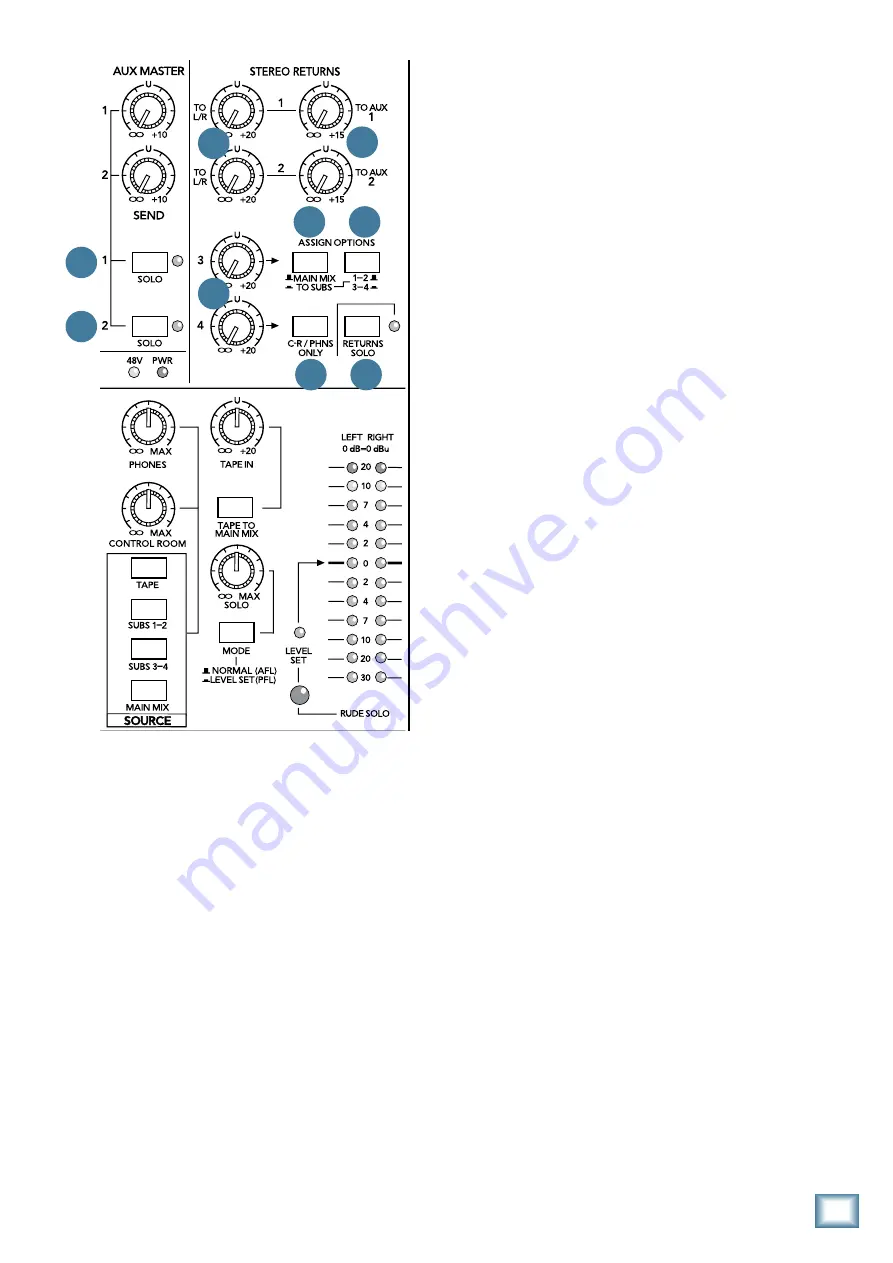
3
Owner’s Manual
Owner’
s Manual
55. C-R/PHNS ONLY (for RETURN 4)
Once again, the default for all the STEREO RETURNS
[7] is to feed them directly into the main mix. You’ve
just learned about the optional exceptions involving
STEREO RETURN 3. Not wanting to be left out, STEREO
RETURN 4 also has an optional exception: By engaging
this C-R/PHNS switch, you will remove STEREO RE-
TURN 4’s stereo signal from the main mix and send it di-
rectly to the CTL ROOM/PHONES SOURCE [42] matrix.
It matters not if any of the SOURCE matrix switches are
assigned, but it will be interrupted, as usual, if a SOLO
switch is engaged.
Let’s pretend you’re doing a live mix to a 2-track deck,
a house PA, or both, and you want to play along to a
click track. You could run the click track directly into
the main mix, but you don’t want the mixdown deck
and/or audience to hear it. By gum, this is the switch
for you. Similarly, it can be used for voice-over tracks,
narration, anything you want heard by the engineer and
players but not by the audience and mixdown deck.
56. RETURNS SOLO
This switch operates just like the channel SOLO [27]
switches — engaging it sends signals to the control
room, headphones, and meters, and interrupts whatever
happened to be there before you soloed. It follows the
MODE [44] switch setting as well. The only difference
is that when you engage this RETURNS SOLO switch, it
sends all four STEREO RETURNS signals to the SOLO
circuit.
Assume you want to solo the snare drum. Hit that
channel’s SOLO switch, and you get the “dry” (no
effects) snare only. That helps, but you want to hear
it with the reverb you have patched into a STEREO
RETURN. Leaving that channel’s SOLO switch engaged,
also engage the RETURNS SOLO switch, and now you’ll
get the dry snare and its reverb.
Since it is a global feature, you’ll also get the signals
from all the other STEREO RETURNS, so there may be
some sounds that you didn’t want to hear. If they offend
your sensibilities, simply turn down the STEREO RE-
TURNS LEVELS [51] you don’t want to hear, or MUTE
[30] the channels feeding the unwanted signal to the
effects device you do want to hear.
Congratulations! You’ve just read about all the fea-
tures of your 1642-VLZ3. You’re probably ready for a nice
cup of tea. Go ahead. The rest of the manual can wait.
55
56
51
50
50
51
52
53
54
























